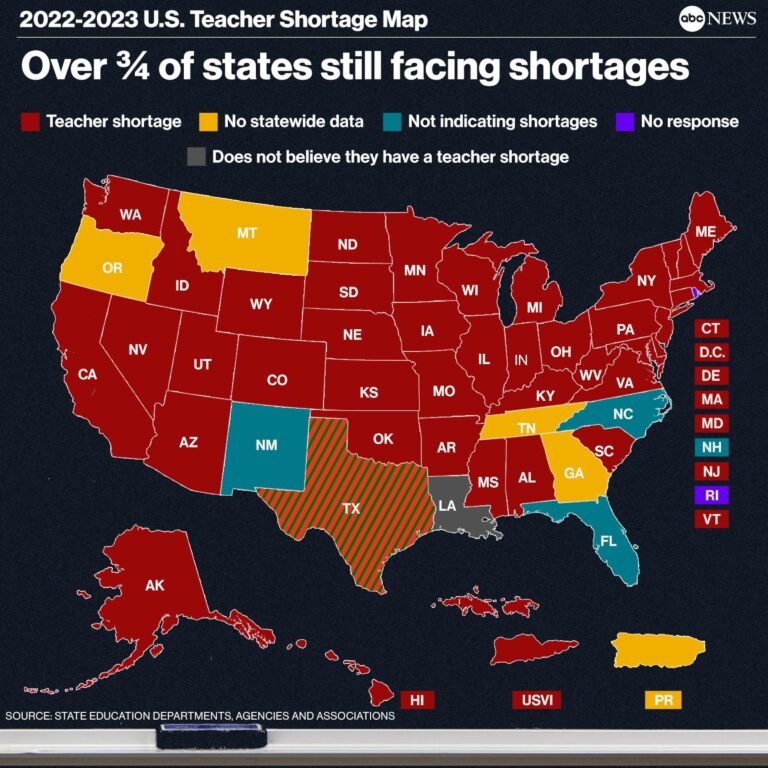Washington State Confronts Severe Shortage of Special Education Teachers, Jeopardizing Student Support
Washington is currently facing a critical deficit in special education educators, a situation that threatens the delivery of essential services to students with disabilities. A recent comprehensive audit, reported by KOIN.com, reveals that nearly 20% of special education teaching roles remain vacant statewide. This shortfall undermines the effectiveness of Individualized Education Programs (IEPs) and delays vital interventions for students who depend on customized learning strategies.
Factors Fueling the Decline in Special Education Staffing
Several intertwined issues contribute to this growing crisis:
- High attrition rates driven by overwhelming workloads and emotional exhaustion
- Uncompetitive compensation packages lacking sufficient incentives
- Scarcity of specialized training programs tailored to state-specific requirements
- Rising enrollment of students requiring specialized support, increasing demand for skilled educators
Regional Impact of Teacher Vacancies
| Area | Vacancy Percentage | Number of Students Affected |
|---|---|---|
| Seattle Metropolitan Area | 18% | Approximately 2,400 students underserved |
| Spokane Region | 22% | Over 1,100 students lacking adequate support |
| Olympia District | 15% | Nearly 800 students impacted |
Unpacking the Underlying Causes of the Special Education Teacher Shortage
The state’s audit sheds light on several systemic challenges fueling the shortage of special education professionals. Chief among these are inadequate funding streams that fail to support competitive wages, excessive administrative responsibilities that detract from teaching time, and a lack of focused recruitment efforts targeting this specialized field. Rural districts face amplified difficulties due to geographic isolation and limited access to professional growth opportunities. Additionally, a significant portion of the current workforce is nearing retirement age, with insufficient new educators entering the profession to replace them.
Highlighted contributors to the staffing crisis include:
- Excessive caseloads: Educators managing more students than recommended, leading to fatigue and decreased effectiveness.
- Insufficient onboarding support: New teachers often lack adequate mentoring and ongoing training.
- Complex certification hurdles: Lengthy, costly credentialing processes deter potential candidates.
- Work-life imbalance: Stressful working conditions reduce long-term commitment to the profession.
Challenges and Proposed Remedies
| Challenge | Effect | Recommended Solution |
|---|---|---|
| Inadequate Salaries | Difficulty attracting new teachers | Boost state funding to offer competitive pay |
| Heavy Administrative Duties | Increased teacher burnout | Reduce paperwork through streamlined processes |
| Certification Barriers | Limited pool of qualified applicants | Implement accelerated credentialing pathways |
Financial Limitations and Recruitment Obstacles Undermine Teacher Retention
School districts throughout Washington report persistent struggles in maintaining a stable special education workforce. Budgetary constraints and stiff competition from other states and professions contribute to stagnant wages, prompting many experienced educators to leave. This turnover exacerbates workload pressures on remaining staff, perpetuating a cycle of burnout and vacancies.
Recruitment is further hindered by rigorous certification standards and a shortage of specialized training programs. The audit identifies several critical barriers:
- Unstable funding: Reliance on short-term grants rather than consistent financial support for special education roles.
- Narrow candidate pools: Few applicants meet the demanding qualifications required.
- Competitive hiring markets: Urban and suburban districts compete intensely for a limited number of qualified teachers.
Recruitment Challenges and Strategic Responses
| Recruitment Issue | Effect on Retention | Proposed Intervention |
|---|---|---|
| Low Compensation | High turnover rates | Enhance funding and introduce salary bonuses |
| Certification Delays | Prolonged vacancies | Simplify and expedite credentialing procedures |
| Excessive Workload | Teacher fatigue and burnout | Recruit additional support personnel |
Calls for Comprehensive Policy Reforms and Strategic Investments to Strengthen the Workforce
Education leaders and policy experts stress the necessity of deliberate investments and reforms to bridge the widening gap in special education staffing across Washington. Priorities include increasing dedicated funding for recruitment, offering competitive compensation packages, and expanding professional development opportunities to nurture and retain skilled educators.
Beyond financial incentives, experts advocate for policy changes that simplify certification processes and foster stronger partnerships between school districts and universities. Key recommendations encompass:
- Accelerated certification pathways to facilitate quicker teacher onboarding
- Structured mentorship programs to support novice educators
- Augmented federal and state funding earmarked specifically for special education
- Data-driven approaches to pinpoint and address regional staffing shortages effectively
Strategic Priorities and Expected Benefits
| Focus Area | Recommended Action | Anticipated Outcome |
|---|---|---|
| Recruitment | Offer competitive salaries and signing bonuses | Improved teacher retention |
| Policy Reform | Streamline certification requirements | Faster placement of qualified teachers |
| Professional Growth | Implement mentorship and ongoing training | Enhanced instructional quality |
Summary: Addressing the Urgent Need for Special Education Teachers in Washington
The audit’s revelations underscore a pressing challenge within Washington’s education system: a significant shortage of special education teachers that threatens equitable access to quality education for students with disabilities. Without immediate and coordinated efforts to improve recruitment, retention, and working conditions, the state risks deepening disparities in special education services. Policymakers, educators, and community advocates must collaborate to implement sustainable solutions that ensure every student receives the support they deserve.







